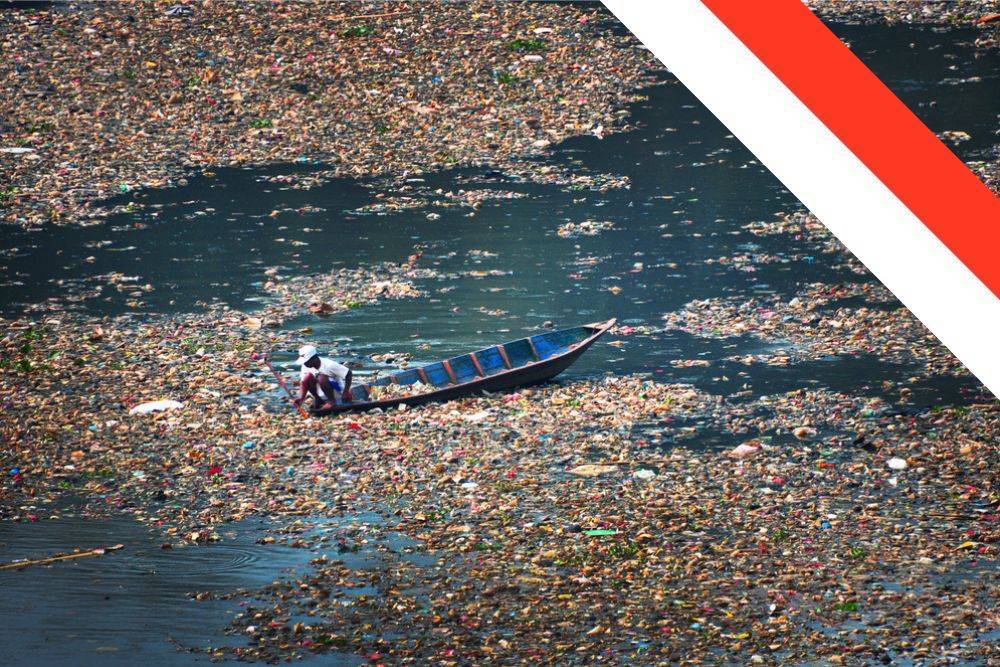The Citarum River is contaminated with paracetamol and amoxicillin, threatening public health and the environment.
Since the discovery of Paracetamol and Amoxicillin contamination, the government has been working to improve waste management and educate the public.
Contamination of the Citarum River
The Citarum River, located in West Java, Indonesia, is seriously contaminated with the active ingredients paracetamol and amoxicillin. This contamination comes from improper disposal of pharmaceutical waste and untreated wastewater. This waste comes from various sources such as hospitals, clinics and households. In addition, indiscriminate waste disposal practices by the pharmaceutical industry and healthcare facilities worsen matters.
These sources of contamination include not only used drugs but also leftover drug production that has not fully decomposed. Inadequate waste handling by the general public also contributes to the high pollution levels in the river. This uncontrolled flow of waste eventually empties into the Citarum River, creating a significant health threat to the millions of people who depend on the river’s water.
Long-term Side Effects of Amoxicillin and Paracetamol Water Contamination
Liver and Kidney Toxicity
Long-term exposure to paracetamol can cause liver damage. Paracetamol accumulated in the body can cause liver cell damage, leading to serious conditions such as liver failure. Amoxicillin, although a generally safe antibiotic, can cause kidney damage with prolonged exposure. Kidneys exposed to chemicals over a long period of time can gradually lose their function.
Antibiotic Resistance
Amoxicillin contamination in water may contribute to increased antibiotic resistance. Bacteria exposed to low doses of antibiotics over a long period of time may mutate to become more resistant. This will complicate the treatment of bacterial infections in the future, threatening public health at large.
Hormonal and Endocrine System Disruption
Paracetamol in drinking water can disrupt the human hormonal system. This contamination has the potential to disrupt thyroid function, growth hormones, and reproductive hormones. This disruption can lead to various health problems, including hormonal imbalance and developmental disorders in children.
Impact on the Nervous System
Long-term exposure to paracetamol and amoxicillin may also affect the nervous system. Studies show that continued exposure may lead to impaired cognitive and neurological functions. These conditions may affect the quality of life and productivity of affected individuals.
Damage to Ecosystems and Biodiversity
Water contamination by paracetamol and amoxicillin is not only harmful to humans, but also to ecosystems. These chemicals can kill aquatic organisms, reduce biodiversity, and disrupt the food chain. This damage has a long-term impact on ecosystem balance and environmental sustainability.
Government Efforts to Address Contamination
The Indonesian government has initiated various efforts to address this issue. Several important steps have been taken to reduce the negative impacts of contamination.
Water Quality Monitoring
The government conducts regular water quality monitoring to identify and address sources of contamination. This monitoring is important to ensure the water used is safe for the community.
Waste Management
Improved waste management practices are in place to prevent pharmaceutical waste from entering the river. The government encourages the adoption of better and safer waste disposal methods.
Public Education
Public awareness campaigns on the dangers of improper waste disposal and the importance of good sanitation are continuously promoted. This education aims to change people’s behaviour in keeping the environment clean.
Research by BRIN and Findings by LIPI
The National Research and Innovation Agency (BRIN) and the Indonesian Institute of Sciences (LIPI) detected contamination of active pharmaceutical ingredients in the Citarum River. Their findings revealed the presence of paracetamol and amoxicillin in significant concentrations.
The research team collected water samples from various locations along the river and analysed them using advanced techniques. These analyses revealed the presence of pharmaceutical residues widespread throughout the river system.
The study revealed that the contamination was not only limited to paracetamol, but also included amoxicillin. This dual contamination points to the need for more comprehensive waste management and stricter water quality monitoring.
The Role of Government, Research, and Society in Sustainable Solutions
Contamination of the Citarum River with paracetamol and amoxicillin is a serious threat to public health and the environment. Government efforts, scientific research, and community participation are critical to addressing this issue. Public education and awareness play a key role in creating sustainable positive change.
Preventive measures we can take include properly disposing of pharmaceutical waste, reducing the overuse of medicines, supporting government programmes, and raising awareness of the importance of keeping the environment clean. Public education is also important to encourage responsible behaviour in managing household waste.
Have a pressing question for a doctor? Medical Channel Asia has launched a community forum page where you can get questions answered by a medical specialist. Visit the community forum here.

